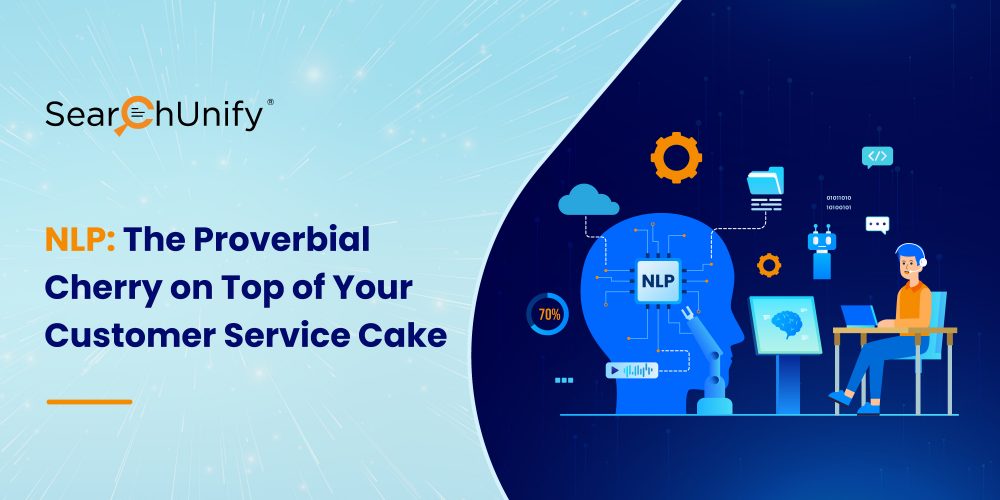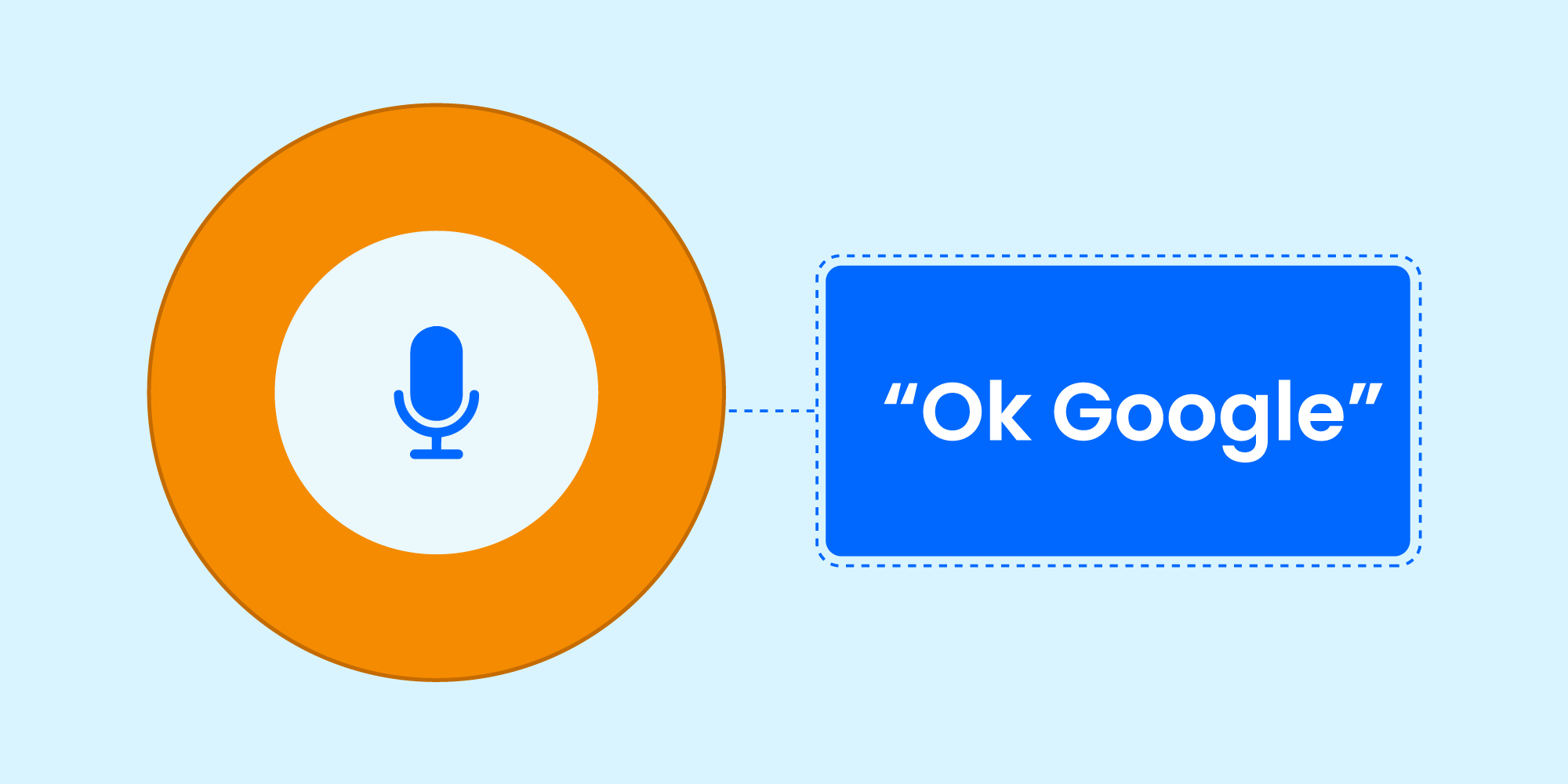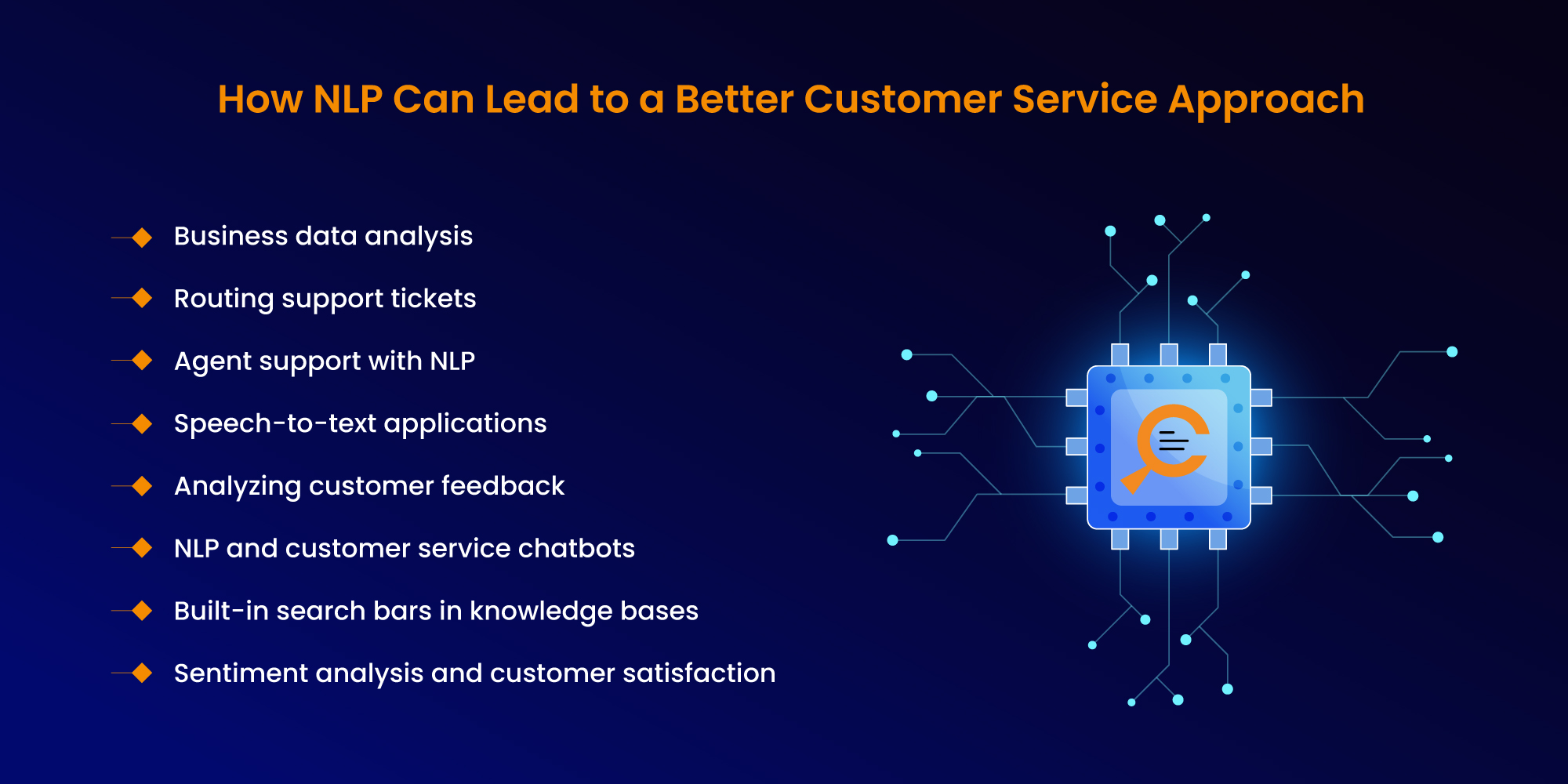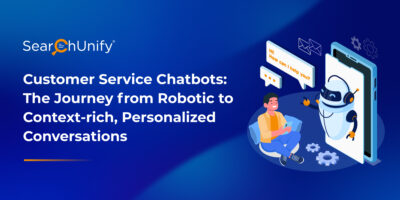
According to Google, 27% of the global online population uses voice search on mobile. That translates to over two billion users!
Who could have imagined it would be so easy to speak what you want and get the desired results?

All this is possible because of NLP. It has brought rapid innovation and improvements across a multitude of industries. Even the customer service realm has witnessed NLP’s magic. Dig in below to know how it can elevate your customer service ecosystem in numerous ways.
Gaining a Deeper Understanding of NLP
NLP stands for Natural Language Processing. It is a branch of Data Science and a subspecialty of Artificial Intelligence (AI) that enables machines to peruse and comprehend human language. NLP also helps generate interactions by processing the information into intellectual discourse.
For instance, when you look up a query hurriedly, you are bound to make typos. In that case, the NLP algorithms come in handy as they automatically scan a list of billions of commonly used words and fetch the search results accordingly. That means accidentally typing “ponk dress” will still return results for “pink dress.”
While we are at it, let us discuss the two components of NLP; NLU (Natural Language Understanding) and NLG ( Natural Language Generation.) The former comprehends detailed exchanges and data to determine the motives of human speech or writing, while the latter uses AI to generate exchanges in a specific language. As a result, data can be transformed into text, and businesses can automate particular manual processes.
How NLP Works
Now that we’ve established NLP enables machines to understand human language, let us take a closer look at the process that makes it happen.
NLP converts text or speech into a code that can be processed and understood by machines. There are two main components of NLP that facilitate this conversion:
-
Data Preprocessing refers to the sorting of textual data so machines can process it. This process converts data to a workable form while accentuating parts of the text an algorithm can work with. This can be done in a few ways:
- Tokenization – the text is broken into smaller units to work with.
- Stemming & Lemmatization – words are diminished to their original forms so they can be processed easily.
- Stop Word Removal – words like it, an, the, etc., are removed from the text so it can become information-centric.
- Part-of-Speech Tagging – words are categorized based on their part-of-speech, such as nouns and verbs.
-
Algorithm Development – Once the data has been pre-processed, an algorithm takes over. They operate in various ways; however, the most common ones are:
- Machine Learning-based Algorithms – Such algorithms learn how to perform tasks based on the data they are provided during their training. As they consume more data during their operations, they learn and optimize their performance, becoming more efficient over time.
- Rule-based Algorithms – These algorithms use knowledge provided to them in the form of rules to achieve artificial intelligence. These predetermined rules help in making decisions based on “if, or else” statements, and are mostly used in descriptive models.

These are just some of the advantages of using NLP as a part of your customer support strategy. Now let’s look at some common challenges that the technology aims to combat.
Circumventing Customer Service Pitfalls with NLP
- Finding Information On Self-Service Portals – According to a report, 40% of consumers now prefer to self-serve rather than talk to a live agent. However, creating the optimal self-service experience still remains a grueling task for organizations. Oftentimes, finding information on self-service portals is a hassle, which may be due to incorrect tagging of the knowledge articles, inability of the search bar to understand synonyms or typos, etc. NLP-based applications can comprehend the semantics, which is necessary to help customers find the information they require. For instance, a customer may be looking for a blog on “AI” but looks up “artificial intelligence.” Instead of showing no results, NLP understands they are both synonyms and displays the correct results. Similarly, it can identify and manage erroneous spellings.
- Getting Irrelevant Results – The search results are often based on keywords; however, one word can have multiple meanings, which leads to irrelevant results. So, when someone looks up “Python,” they might see pictures of snakes instead of results about the programming language. As mentioned above, NLP-based applications can comprehend the semantics, which is necessary to help your customers find the information they require. Thus, it will be able to understand the search intent and present relevant results.
-
Classifying and Assigning Support Tickets Accurately – Classification refers to recognizing, understanding, and grouping together similar types of cases as “fields,” so they can be resolved with the proper expertise. When a support ticket is raised, NLP is responsible for understanding human language and picking the data for relevant key points. This is done through tokenization based on keywords. Such as, a case tagged “Salesforce” would be routed to the support agent with relevant expertise, preferably someone who can handle all the issues mentioned in the support ticket. Further, the agent to which the case is assigned is chosen based on a few things:
- How many times and for how long they have worked on the same keywords.
- What is their timezone.
- How many cases are they currently working on, and how many can they handle, based on their past data.
In case the best suitable agent for the ticket is swamped, it will be assigned to the next best agent with the capacity to take on more work. Once the case has been routed, it must be prioritized based on the agent’s workload. This is done with the help of NLU and sentiment analysis, by understanding the context of each ticket and prioritizing them based on how serious the issue is, and how urgently it needs to be resolved.
-
Receiving Static Responses from Chatbots – Traditional bots yield out-of-context and irrelevant responses, which end up frustrating the customers. They also offer little to no insights into the various interactions. This impedes the overall support delivery and becomes an additional burden on the service reps. NLU helps detect user intent based on their history, engagement patterns, etc. It can also detect irate or sarcastic tones and respond accordingly. Implementing a chatbot is essential for companies to elevate their customer service, as agents cannot be present at all times to give quick responses. Basic chatbots offer a feasible solution to this problem, but intelligent chatbots come with some additional layers such as:
- Auto intent training – Setting up chatbots to represent your brand is quite a laborious task as they need to be trained to identify different intents and respond accordingly. Intelligent chatbot takes that out of the equation by proactively identifying orphan intents and training itself for the same.
- Contextual responses – Natural Language Generation (NLG) turns structured data into text. It basically helps intelligent chatbots frame contextual responses and engage in meaningful conversations. This allows companies to gain insight and focus on what the customers need.
The Ultimate Guide for Implementing NLP into Your Tech Stack
We have just scratched the surface here. If you wish to take a deeper dive into the world of NLP as a client-centric solution, check out this handy guide on leveraging it for customer service.


















